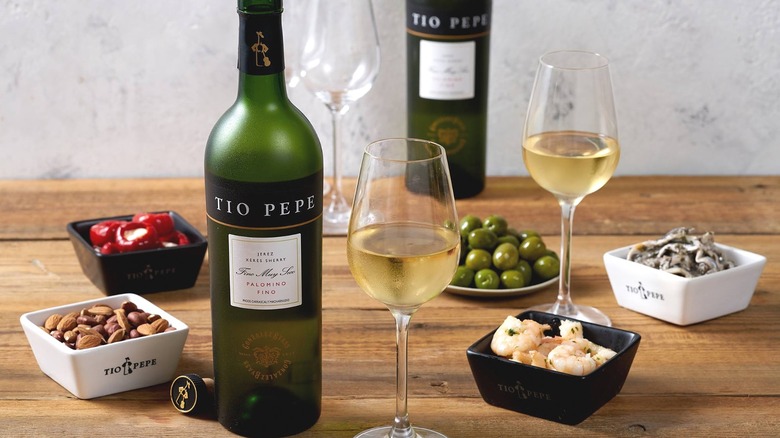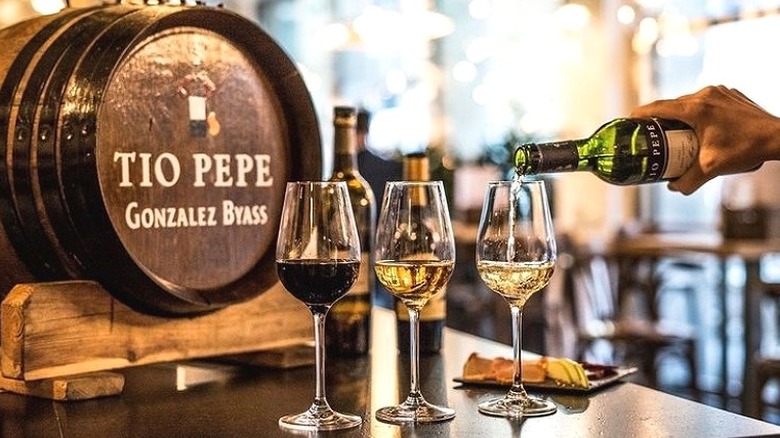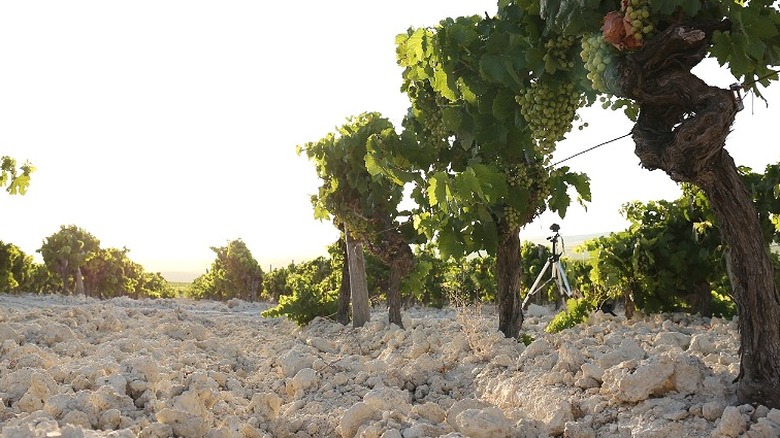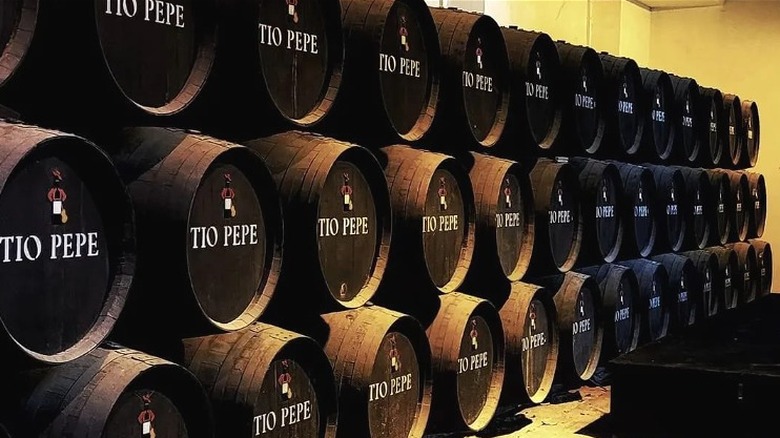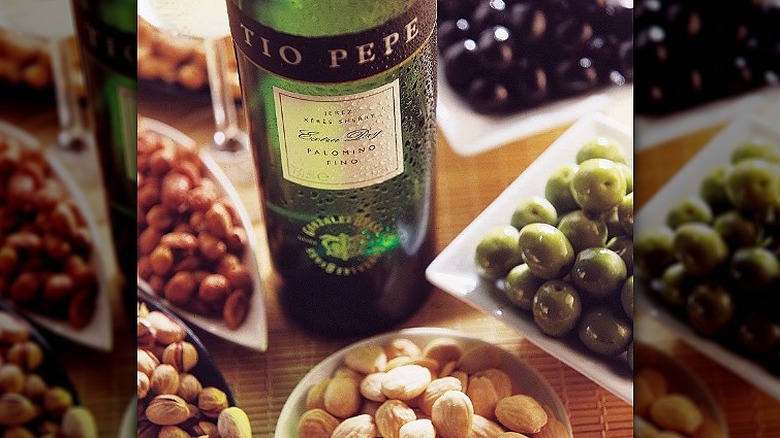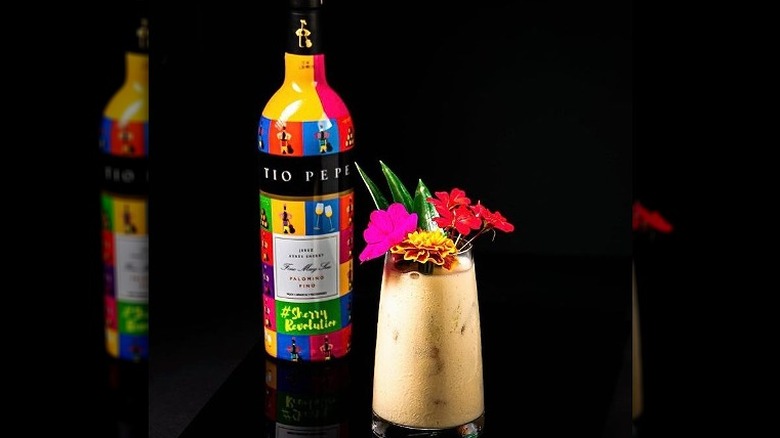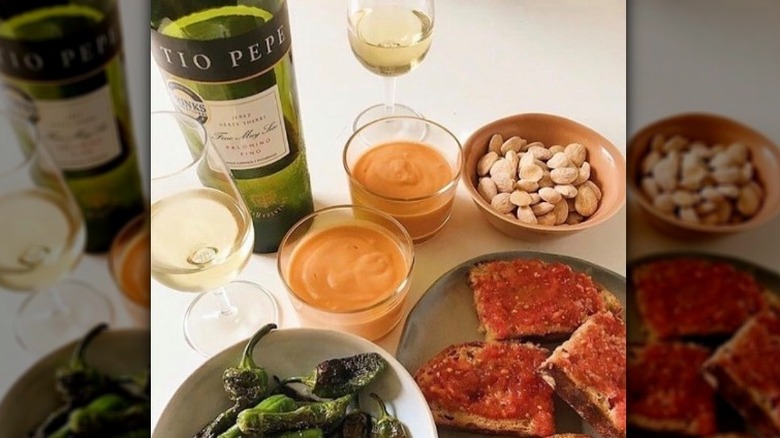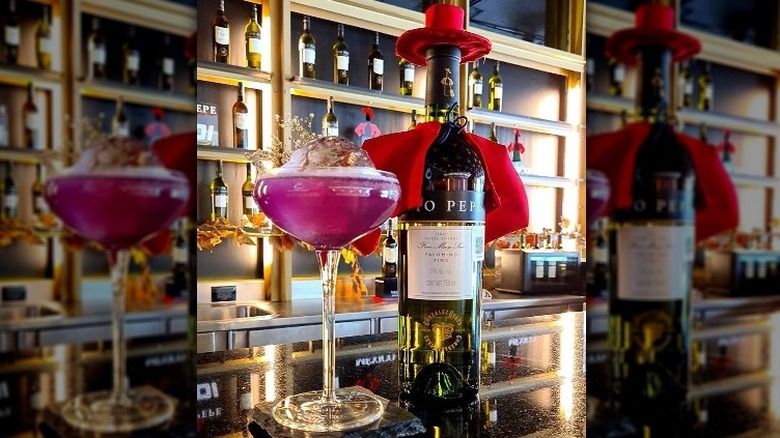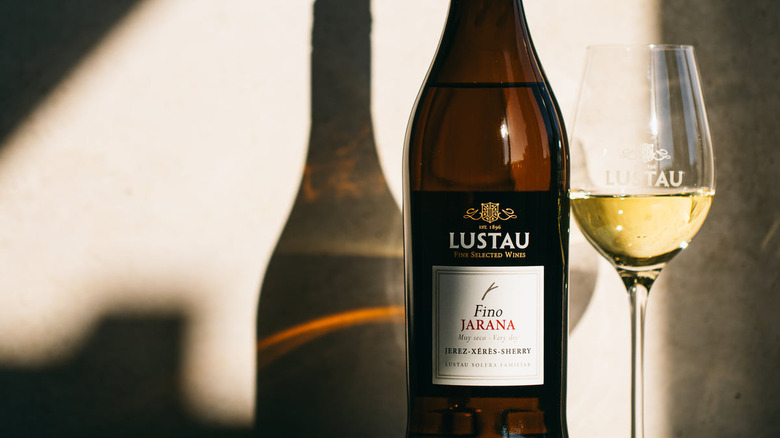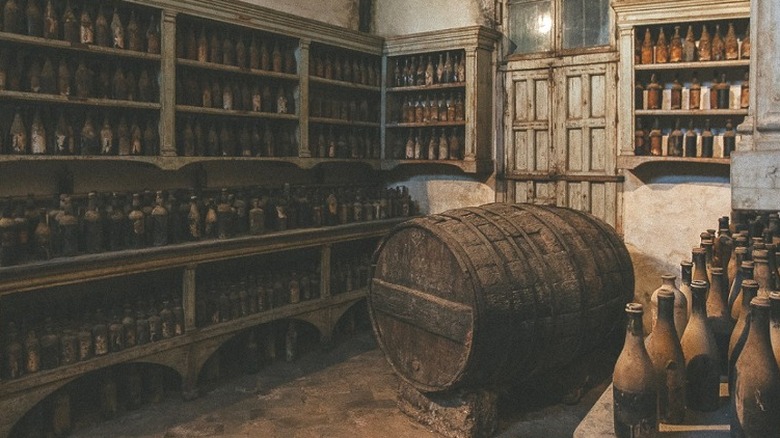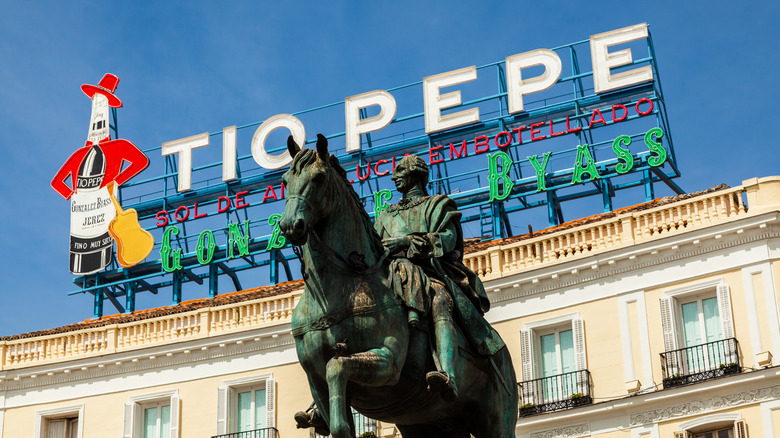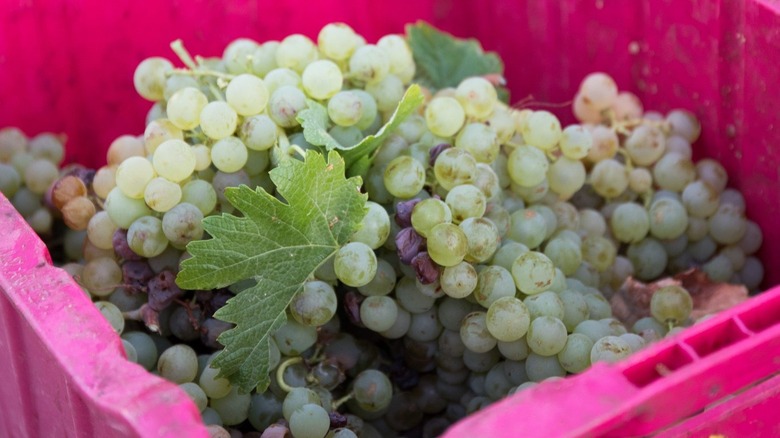Tio Pepe Sherry: The Ultimate Bottle Guide
The Drinks Business reports Spain is the second largest wine producer in the world. We aren't surprised. The wines of Spain are balanced, approachable, and food-friendly, particularly its international signature selection, sherry. Produced in Spain's oldest Denomination of Origin (D.O.), Jerez-Xérès-Sherry was established as the home of sherry in 1935, run by the Consejo Regulador, the governing body of sherry.
Though sherry production is hundreds of years old, the drink's sales have struggled in the past few decades. However, today, the category's sales are trending upward. Drinks Digest reports 2021 sales were up over 20% year to year internationally. Spain's most popular fino sherry, Tio Pepe, leads the pack today as the darling of the sherry world. Fino is the finest, purest sherry style, made from palomino, highlighting the grape variety's delicate essence.
The Drinks Business adds amid the 2020 lockdown due to COVID-19, Tio Pepe's sales were up over 30% internationally. The publication reports that the brand did not pinpoint why the light was finally shining on the sherry. However, HUDIN reports, it was likely because curious quarantined customers began experimenting with homemade craft cocktails. Or, wine enthusiasts began enjoying it as a savory alternative to dry white wine. The wine site states one certainty; today's bartenders, sommeliers, and novice drinkers are in love with sherry.
Tio Pepe is a worldwide favorite. Let's explore Spain by diving into the history of Tio Pepe and why you should drink it tonight, especially if you are new to sherry.
Tio Pepe is over 170 years old
In 1835, Manuel María González Ángel began what would become one of the premier sherry houses in the world. Sherry Notes further explains the young businessman saw an opportunity in the growing sherry industry in Jerez, buying a small winery. Initially, he planned to trade sherry rather than make it. However, by 1844, González was producing a dry fino-style sherry wine, which he began selling internationally. England was the first to import González's sherry that same year.
Today, over 100 countries import the fino, which González named Tio Pepe in 1849. Sherry Notes adds that González partnered with his English importer, Robert Blake Byass, in 1855, creating what has become Spain's largest sherry producer, Gonzalez Byass. In 1886, Tio Pepe became one of the first registered trademarks in Spain.
The Drinks Business reports today Gonzalez Byass manages 10% of the total planted vineyards in D.O. Jerez-Xérès-Sherry, around 650 hectares (over 1,600 acres) in the region. Today, the company remains a family business, run by the fifth and sixth generation of the González family, managing an international portfolio of over a dozen wines, sherry, and spirits brands.
Tio Pepe is fortified fino sherry
How the varying styles of sherry are made can be confusing. But don't worry, your ultimate sherry cheat sheet is here, outlining its production with a few easily understood descriptions.
In producing all dry styles of sherry, including fino, the palomino grape variety undergoes fermentation reaching 12% alcohol. After fermentation, the winemakers classify the type of sherry the wine will become. As Tio Pepe is a fino style, the wine is then fortified with a neutral grape spirit, also known as brandy, to 15% alcohol and prepared for aging. There are two production styles for sherry-fortified wine. They are sherries that age biologically, like Tio Pepe, and those that are aged oxidatively. Oxidative sherry ages with air exposure. Biological sherry is protected from oxygen.
Biologically made Fino Tio Pepe ages in American oak butts (600-liter barrels) under a layer of yeast known as the veil of the flower, or flor. The flor forms on the surface of the wine, protecting it from oxidation while imparting flavors and adding texture to the wine.
Yeast is different from that which turns sugars into alcohol in fermentation. The flor yeast forms due to the humid conditions of Jerez, moderate temperatures, lack of sugar, and fortified alcohol strength of 15% to 17%. The yeast requires oxygen to survive, rising to the wine's surface, and forming a bubbly white shield over the wine. The flor is thickest and most active when the wine is young.
The soil is a crucial ingredient in Tio Pepe
Merriam-Webster Dictionary defines terroir as the factors giving character to the wine, like the climate, wind, and amount of sunlight. While each element is required, the soil is vital. The best representation of palomino is grown in albariza soils within D.O. Jerez-Xérès-Sherry, lying in the hills of southern Spain's Andalucía. Sherry Notes explains that white albariza soil contains limestone mixed with 30% to 80% chalky clay. This soil is heavy with calcium carbonate as the region was underwater for hundreds of years. The mineral-intense grounds are ideal for palomino because of their chalky clay contents.
The clay soil captures water during the rainy winter, evenly distributing it through the ground, nourishing vines that dig deep into the earth during the dry summer, enhancing the wine's salinity and crushed stone character. During the dry, hot summers, sunshine hardens the soil's upper tier blocking evaporation under the surface and propelling the vine's survival, (via Sherry Wines).
Sherry Notes adds within the production zones of D.O. Jerez-Xérès-Sherry, Jerez Superior is considered the best area for growing Palomino grapes of superior quality due to the abundant albariza soils. Tio Pepe adds that, by law, 60% of the grapes for fino sherry must come from the Jerez Superior Zone; 100% of the grapes used in Tio Pepe come from Jerez Superior.
The solera is key to the production of Tio Pepe
Sherry Wines explains the aging of sherry occurs in a constantly rotating criadera and solera system of fractional blending. Wine distributes in a series of scales where the top tier of the nursery of sherry butts holds the youngest, most recent vintage of wine. That young tier refreshes the previous vintage's tier, the previous vintage refreshes the tier prior, and then another, and so on, until reaching the final scale of the solera. This final scale holds the oldest sherry in the solera, which will be bottled that year.
Adding younger wine to the wine from a year prior brings youthful nutrients and fresh oxygen to older wine, feeding the yeast cells and keeping the flor intact. Sherry Wines reports that fino must age at least two years in the solera by law. Tio Pepe ages a minimum of four years, with the rotating criadera, or nurseries, ensuring that younger wines acquire similar characteristics as older, taking on a consistent flavor profile.
Sherry Wines adds that, over time, the veil will dissipate. When the flor becomes relatively thin and the wine is at risk of exposure to air, the aging is complete. Chambers Street Wines adds that Tio Pepe's production includes wine from 21 solera housing over 20,000 barrels. Its production accounts for over 60% of the sherry produced by Gonzalez Byass, annually.
Tio Pepe's tastes like almonds and apples
Tio Pepe is fruity, intense, and savory, with a well-rounded balance from start to finish. Thanks to the flor protecting fino sherry from oxidation, Tio Pepe has incredible freshness with a pale golden color. When we tried the sherry, the first flavor to hit the front palate was tart green apple and lemon-lime citrus. These flavors quickly give way to nutty, slightly bitter notes of blanched almond and salty green olive.
Though vibrant and nicely refreshing to start, the palate of the fino rounds out with a luscious, unctuousness melding with acidity. The aromas are rich with brioche and baked biscuits. Yet, the yeastiness of the fino isn't apparent in the taste until the finish. The final flavors of the sherry reveal a creamy, bready, buttery popcorn richness with a sprinkle of salt that lingers. Though the sherry has a mouth-coating, glycerin-like texture, the drink remains light without weighing down the palate. With an alcohol level of 15%, the fortified wine isn't much more potent than some new-world white wines, like Rombauer, Chalone, and Ferrari-Carano, making it an excellent alternative to your evening glass of wine.
Enjoy Tio Pepe chilled, served neat, or in your favorite cocktails
Historically, Tio Pepe was consumed from short sherry glasses that didn't hold more than a nip. However, as today's consumers enjoy the fino as an aperitif or with a meal, sherry connoisseurs recommend using white wine glasses.
The use of the small copita, or traditional sherry glass, does not allow the full aromas of the fino to become apparent. However, when pouring the sherry neat into a white wine glass, with its large bowl and narrow top, the sherry's aromatics are released. The inviting aromas, the essence of the sherry, is carried up to the top of the glass with a simple swirl for full appreciation. Tio Pepe adds it is best to enjoy the fino very chilled.
Adding sherry to favorite recipes has become increasingly popular among cocktail fans recently. In the 2020 Drinks International brand report, 90% of bars sampled had sherry on hand and ready to pour behind the bar. The report adds that Tio Pepe is the favorite for every sherry produced and style produced. The versatility of Tio Pepe is an ideal lower alcohol option as the base liquor in cocktails. We love it in an Adonis cocktail, making the sherry the alternative alcohol instead of rye in a modern Manhattan cocktail. Or, use it as the star ingredient in a Sherry Cobbler, the cocktail made famous by Charles Dickens.
Tapas and Tio Pepe make the ideal match
The mouthwatering salinity of Tio Pepe makes it a welcome addition to any Spanish tapas feast. When enjoyed as an aperitif, it is at home with a simple spread of olives and Marcona almonds, with both flavors lingering throughout the sherry. Or pour a glass to pair with a platter of Serrano ham, marinated anchovies, and Manchego cheese, with the savory salty flavors complementing each other. We suggest pairing it with hot tapas like creamy mashed potato croquettes or papas bravas, with the wine's acidity cutting through the fattiness of the fried bites.
Beyond aperitifs, Tio Pepe can easily pair with entrees like a classic seafood paella filled with briny mussels, squid, and prawns, highlighting the sherry's briny flavors. We also love it with sashimi, enhancing the umami flavors of the fish.
The fino's flavors also solve some of the most demanding food and wine pairing challenges, like pairing asparagus or artichoke. Both vegetables can give the wine a metallic taste when drinking it. Clean and crisp fino sherry lends savory, umami flavors complementing the green vegetables instead of clashing with them.
Is Tio Pepe expensive?
Tio Pepe is a delicious umami and savory flavor-filled option made from quality fruit and aged in the ideal setting to produce a premium yet affordable product. Oregonlive reports that, as a whole, the sherry category is exceptionally inexpensive. Tio Pepe falls right in line, costing around $22 for a 750-milliliter bottle and about half that for 350-milliliter bottles. You can find less expensive options, including some made by Tio Pepe's parent company. Still, none hold the same beloved prestige and recognition as Tio Pepe.
With its lively, rich palate, and 15.5% alcohol level, you can enjoy Tio Pepe's from the start of an evening to throughout a meal, making it comparable to other wines. However, no other wine can deliver quite the same taste and flavor as the fino sherry. And, as it can play double duty as a base in your favorite cocktails, it is a bargain.
Tio Pepe versus Lustau Fino Jarana
There are similarities in comparing Tio Pepe to other fino sherry brands of the same quality, like Lustau. Lustau's history dates back to 1896 when founder Mr. José Ruiz-Berdejo first began making wine from vines growing on his property. In the early days, Lustau only sold wine to other sherry producers. In the 1950s, the winery started selling its sherry commercially. It grew to enjoy award-winning success over the next several decades, including being named the best sherry producer in 2014 and 2016 at the International Wine & Spirit Competition.
Like Tio Pepe, Lustau's Fino Jarana comes from the winery's Jerez de la Frontera bodega, is 100% palomino, aged four years under flor, and has an alcohol level of 15%. It is ranked the second most popular sherry brand in bars worldwide after Tio Pepe, (via Drinks International).
Though the production is similar to Tio Pepe, the flavors are different. When we tried the sherry, we found the yeastiness more present and the fruitiness more subdued than the flavors of Tio Pepe. Similarly, Lustau's palate is very dry, and the body is round, finishing toasty with bitter almond and olive. The average cost of Lustau's fino is slightly less expensive than Tio Pepe, around $18 for a bottle.
Tio Pepe was a real person
Tio Pepe was the nickname Manuel María González Ángel gave to his uncle, José María Ángel y Vargas. Ángel was the central figure who guided González in his early years in the sherry business. When González began, he had no formal training in the wine industry. Master of Wine Liz Thach reports González was a clerk at the time watching the ships taking sherry from the port. He saw potential in the growing industry and purchased a small winery in Jerez de la Frontera.
As his business began growing, González sought guidance and advice from his uncle. Ángel was a knowledgeable winemaker and taught González the art of making sherry, particularly his favorite style, fino. As a thank you for the advice and guidance, González gifted his uncle a small cellar and solera of fino barrels inside his winery. It became a place Ángel could enjoy his favorite sherry with friends, naming it Solera del Tío Pepe.
Tio Pepe is an unofficial emblem of Madrid
Tio Pepe's logo is as iconic as the libation inside the bottle. The logo was initially designed in 1935 and made to look like an Andalusian musician with a guitar, wide-brimmed hat, and red jacket wrapped around the sherry's green bottle.
In 1936, the logo became a part of Madrid's skyline, capping the top of the Hotel Paris in Puerta del Sol. History of Madrid reports the logo and associated sign reading "Tio Pepe, Sol de Andalucia Embotellado!" (Andalusian sun bottled) began as an advertising campaign. The neon sign stayed on the hotel's rooftop for over 80 years, becoming a fixture in the community. Tio Pepe's sign had been allowed to remain through the decades as locals felt it was a natural part of Puerta del Sol's identity, a landmark.
In 2011, the building was purchased by Apple, and the sign came down while the building was undergoing restoration. Apple likely hoped it could hoist its logo to the top of the building. However, current regulations prohibit new neon signs in the square. Atlas Obscura adds the local people wanted the original sign back, gaining over 50,000 signatures in a petition. Still, the new building owners could not be persuaded to return the sign. In 2014, Gonzalez Byass reached an agreement with another building in the square. Today, a shining, refurbished logo and sign is again a part of Madrid's skyline to hopefully overlook Puerta del Sol for many years to come.
Picasso, Orson Wells, and Spielberg are fans of Tio Pepe
Just as the local people of Spain have an affection for Tio Pepe and its joyful logo, the brand has developed many fans of celebrity stature through the years.
Picasso is famously known for his love of absinthe; however, he was also a fan of Tio Pepe. The Spanish artist was a fan of the wines and people surrounding them from his home country as they were thought to have influenced his early cubist paintings, including "Bottle and Wine Glass on a Table," (via Sweet and Sabroso). SUR shares an exhibition of photos taken by Juan Gyenes of the renowned artist painting with the guitar-wielding bottle in his studio.
When Picasso visited the bodega in Jerez, he signed his name to a barrel in color while adding a miniature painting of a bull, adds Tipple Sheet. Orson Wells, Steven Spielberg, Omar Sharif, Chelsea Clinton, and more have walked the bodega, signing their names on barrels that remain there for years to come. Former British Prime Minister, Margaret Thatcher, signed it was the best sherry in the world on her trip to the winery in 1998.
Tio Pepe's future could be changing
Though sherry is hundreds of years old, recent changes to its governing laws could redefine the category. Until recently, the aging solera had to lie within the sherry triangle. Sherry Notes defines the sherry triangle as the cities of Jerez de la Frontera, Puerto de Santa María, and Sanlúcar de Barrameda. Though grapes could grow in six nearby production zones, maturation had to occur within the triangle. In 2021 the Consejo Regulador redrew the aging zone, including the additional six production zones forming the Marco de Jerez.
Seven Fifty Daily reports additional changes in 2022 awaiting final approval, including non-fortifying sherry produced in D.O. Jerez-Xérès-Sherry and neighboring D.O. Manzanilla de Sanlúcar. For generations, sherry has been known as a fortified wine made by adding a wine-based spirit to authorized grapes to create the base. Modern producers have found fortifying unnecessary as the fruit naturally reaches the required alcohol levels.
By not adding the grape spirit to the wine for fortification, proponents of the change feel the resulting sherry will be a more authentic, traditional product. Though the change will not be a requirement, the decision significantly changes how we define sherry. As climate change continues to be a concern, the D.O. is reclassifying six historic grape varieties that are drought-resistant for sherry production beginning in 2023. Global warming was highly evident in Jerez in 2022, with the harvest beginning the earliest in the region's history on July 28.
